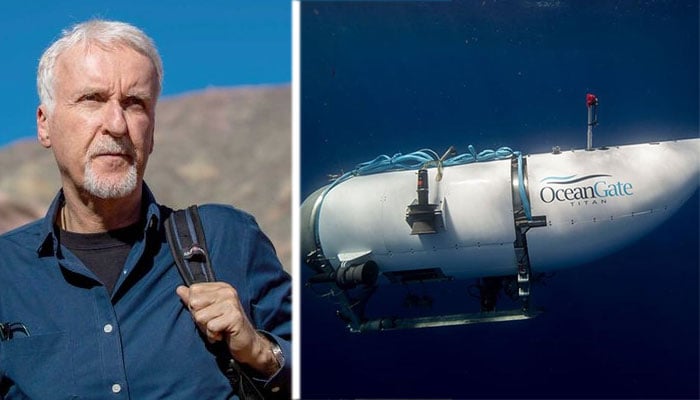James Cameron reveals why Ocean Gates’ Titan imploded: ‘Microscopic water ingress’
The famed ‘Titanic’ director’ James Cameron reveals why this dive destroyed the Titan and why not the others
James Cameron, the director famous for making movies like Avatar and Titanic has just broken his silence on the real reason the Titan failed in this mission, and not anytime else.
He broke it all down with TalkTV and started by saying, “He started the entire converastion off by saying, “Ocean Gate shouldn’t have been doing what it was doing. I think that’s pretty clear. I wish I had been more vocal about that, but I think I was unaware that they weren’t certified because I wasn’t really studying it. I wasn’t really interested.”
He also went on to reference all the concern that was floating around, surrounding the “outfit and this sub”, and admitted, there was "a lot of concern. Even to the extent that I wasn’t involved in it because I was making Avatar 2 at the time, but a lot of them go together and wrote a letter to OceanGate and said, you have to certify, you cannot take people down. Its irresponsible and it could lead to catastrophe.”
Later on, into the chat he also admitted, “Monday morning, when I first found out about the incident, I got a whole bunch of calls and emails, it’s a small community within an hour and a half, I had the following information; they were on descent, they were at 3500 feet, they lost comms and tracking. The last one being the critical one.”
Because "the transponder used to track a sub… during descent and on the bottom, is a fully autonomous system its in its own pressure housing and it has its own battery power. So for them to lose comms and tracking at the same time, so it was gone” and there was no question in my mind.”
“For days I tried to run other scenarios that I could account for it” but “I couldn’t come up with nothing. So, the next thing I did was contacted a few more people and managed to track down.”
“There are acoustic networks, some are research, some are intelligence,” and “we got confirmation within the hour that there had been a loud bang at the same time that he sub’s comms were lost.”
But once the director learned that there was a “loud bang on the hydrophones," followed by the "loss of transducer or transponder," then loss of comms "I knew what happened.”
From that moment on, “I sent emails to everybody I know, I said we’ve lost some friends. The sub is imploded. Its on the bottom in pieces right now," he added.
Plus, “I never believed in that technology of wound carbon fiber in a wound filament, a cylindrical hole. I thought it was a horrible idea.”
“I wish I’d spoken up, you know but I assumed somebody was smarter than me, you know, because I’d never experimented with that technology, but it just sounded bad on its face.”
This is mainly due to the fact that we “make pressure holes out of contiguous material, i.e., steel, titanium, ceramic, acrylic.” You can “model it, you can do finite element analysis of it.”
With these things, “you understand the number of cycles that it can take but you can’t do that with a composite material because it’s too dissimilar materials, you know, sort of bonded together.”
“And so we knew that the danger was delamination and progressive failure over time with microscopic water ingress and fatigue, what they call cycling fatigue. We knew that if the sub passed its pressure test, it wasn’t going to fail on the first dive, it might fail on dive seven.”
"It’s going to fail over time, which is insidious you don’t get that with steel or titanium," he added before signing off and admitting “now there is one lying next to the other wreck, for the same damn reason.”
-
Sophie Turner gets candid about 'imposter sydrome' post 'GOT'
-
When Nicola Peltz's boyfriend Anwar Hadid found solace in Dua Lipa's arms
-
Claire Foy reveals rare impact of 'The Crown' gig on career
-
Megan Thee Stallion teases new music on the way
-
Kate Gosselin reveals harrowing moment thief nearly took her down
-
Billy Bob Thornton weighs in on contrast to 'Landman' role
-
Amanda Holden may swap position to different reality show: See which
-
The truth behind Victoria Beckham's 'inappropriate' wedding dance video












